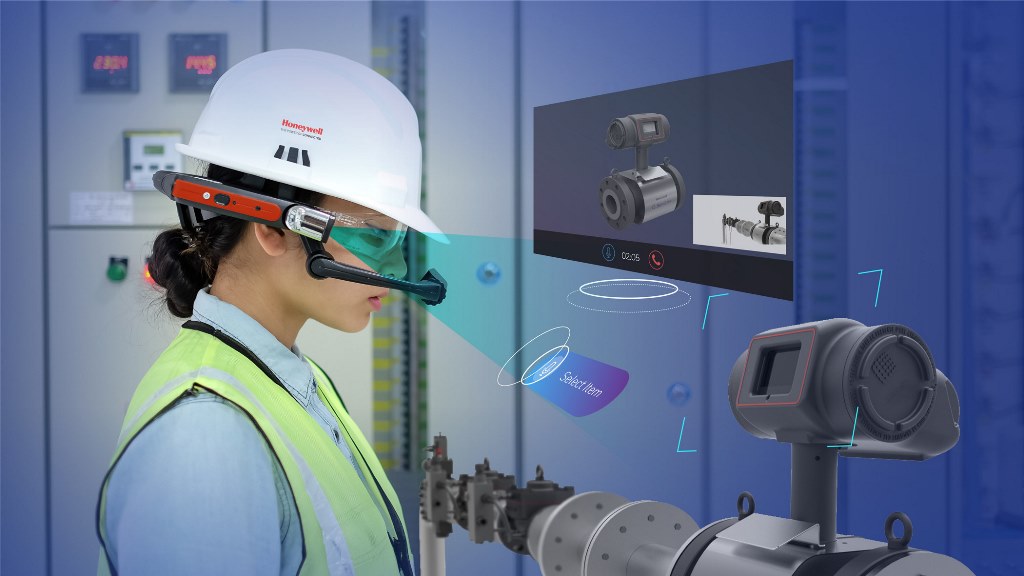AR/ VR for plant engineering review
The twenty-first century has witnessed some of the most mind-boggling technological transformations in sectors like Engineering and Construction. But the one that successfully created a “mainstream” position for itself is- Augmented and Virtual reality (AR/VR).
This article will reveal how the “reality” of these breakthrough technologies can help make an impactful difference in the way industries now operate.
AR/VR- Means business beyond gaming
AR combines the existing environment with interactive details like images, sound, texts, and effects to augment the user’s real-world experience. Digital layer superimposed on the real physical world, in a unified manner, enhances the perception of the operation to support visualization of design, construction, repair, and much more. AR is experienced with smartphones, tablets, smart glasses and, head-mounted display devices (HMD).
VR provides enclosed and computer-generated simulation to the user in the real-world for an immersive experience. It replaces the user’s perception of surroundings with a close-to-real virtual environment using HMDs, glasses, multi-display setups and, sensor-fitted gloves.
The uses of AR/VR:
According to the latest study by Statista, the global market for AR/VR market is expected to rise from 30.7 billion U.S. dollars in 2021 to around 300 billion U.S. dollars by 2024.
The statistics show we are getting used to seeing the AR/VR from a viewpoint further on than just entertainment. And it is no surprise that industries adopting them at this point will have a competitive edge.
How SES Digital can help various industries with AR/VR technology?
- Rehearsive VR
A revolutionary VR empowers businesses to rehearse the constructional and operational processes beforehand. The infrastructure team can now go through the construction designs from any part of the world. With help of a VR headset, it can seamlessly integrate 3D workflows and BIM models for more time and cost-effective means without compromising on resolution clarity of interactive and video immersive experience.
Rehearsive VR also optimizes design review by correlating designs with their probable impact on real operation sites. This helps to anticipate and thus mitigate threats even before the operations begin.
- Product design
Overlaying and Virtual approach catalyze the design stage with less dependence on a physical model, easy collaboration with clients for design review, and convenient testing of the virtual prototype, thereby trimming the product life cycle.
- Quality checks
AR and VR-led instructional guide allows verification and validation of the quality of parts and their error-free assemblage with high-powered industrial camera and projector.
- Plant Maintenance
Repair and maintenance of plant machinery contribute significantly to downtime. AR/VR equips technicians to see machine condition, detect and fix the problem instantly with real-time instructions and feedback. The result is enhanced productivity and accuracy.
- Safe working premises
It eliminates the need to be in close proximity with hazardous conditions of some industries like coal mining, chemical industries, and thereby enhances performance and safety standards.
- Navigation
Visual and oral guidance allows easy and time-effective navigation of the factory for engineers and workers.
- Retention of training
Industries benefit immensely with virtual skill training of employees and help them look beyond traditional lecture training and printed manuals. This prepares them better for daily operations and risky encounters like explosions, chemical leaks, and runaway reactions.
Emerging trends of AR/VR
The disruptive opportunities this technology offers suggest businesses are likely to see a whole alternative world of innovative offerings using AR/VR.
Research is underway to combine AR/VR with the Internet of Things (IoT) into mixed reality (MR) for a more seamless and realistic approach in engineering operations. Devices are being refined to extend their usability in diverse conditions. The advancements in headset display quality will ensure clearer images. WebAR will enable AR on various web browsers.
And with a 5G mobile network around the corner, industries can expect a never before connectivity for a high-definition virtual experience with low-bandwidth and cheaper costs.
Concluding thoughts
At SES Digital, we are 100% committed to the implementation of Smart Factory Solutions. Our team of experts ensures that through total immersive VR review all the project review feedbacks are swiftly identified and corrected in the design stage itself.

